Which is better: wooden or plastic windows?
Wooden classics, now disparagingly called woodwork, due to their whimsical care, have given way to plastic with double-glazed windows. But then Euro-windows appeared - a new development that brought wood frames to a higher level. And if earlier tightness was a key parameter when choosing windows, now it has turned into a secondary, mandatory characteristic. Because of this, it became much more difficult to settle on any of the options.
The content of the article
Design features
Carpentry It is a simple frame made of solid wood, to which the glass is attached with wooden glazing beads. Over time, such a structure can become deformed, especially if it is made from raw wood or by a crooked craftsman. This is complemented by simple fittings that limit the number of frame positions. The only change affected the locking system - now, instead of the usual bolts, mortise twist locks are increasingly used.
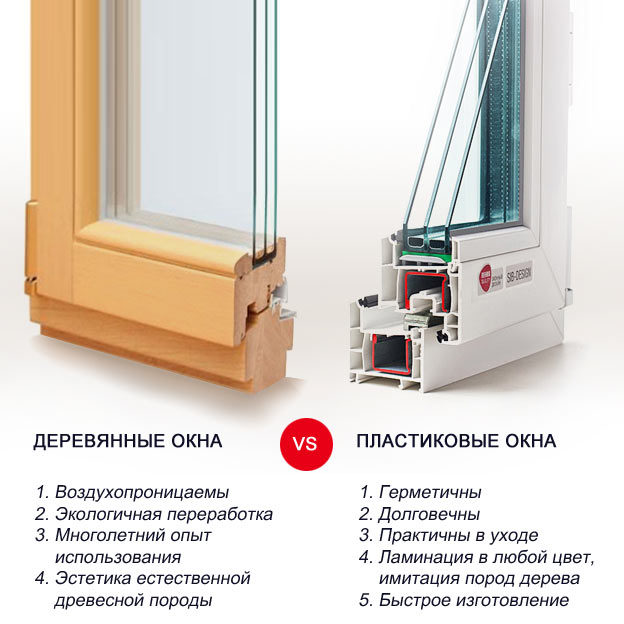
Plastic the material itself is quite cold. To compensate for this, the frame is made of it with voids, each of which is a thermal insulation cushion. But such windows gained popularity not because of the structure of the frame, but because of the double-glazed windows.After all, a sealed block of two (and later three or more) glasses made it possible to reduce the thickness of the entire window without losing its performance characteristics. The package inside the frame is fixed without play (rattling from sound waves has disappeared) using glazing beads on the locks. Moreover, in addition to the spacious window sill, which previously could only be dreamed of, plastic eliminated the need to wash the inside of the windows. And the fittings not only allow the use of various ventilation modes, but also, in combination with seals, eliminated the need to increase the tightness of the structure during the cold season. Now you just need to make the “winter-summer” adjustment, adjusting the sashes more tightly to the frame with a few movements of a screwdriver.
Eurowindow - a natural result of attempts to combine the advantages of both predecessors and eliminate their shortcomings. The wooden frame, supplemented with seals, is much warmer and stronger than a plastic one. To prevent it from “sagging” over time, it is not solid wood that is used, but glued laminated timber - the fibers of adjacent layers are directed in different directions, thanks to which it was possible to increase the strength of the structure. The glass unit in the frame is fixed with the same glazing beads on nails, which makes it difficult to replace it if necessary. But the fittings are completely borrowed from plastic analogues, thanks to which we managed to get rid of the seasonal hassle of sealing typical for carpentry.
Warmth, sound insulation
The main disadvantages of classic carpentry are poor fit of the glass to the frame and a poorly defined sealing contour. The latter is difficult to implement due to seasonal deformations of the structure, which is sensitive to temperature changes and humidity.As a result, the ubiquitous noise and dust easily penetrate into the house along with the street air.
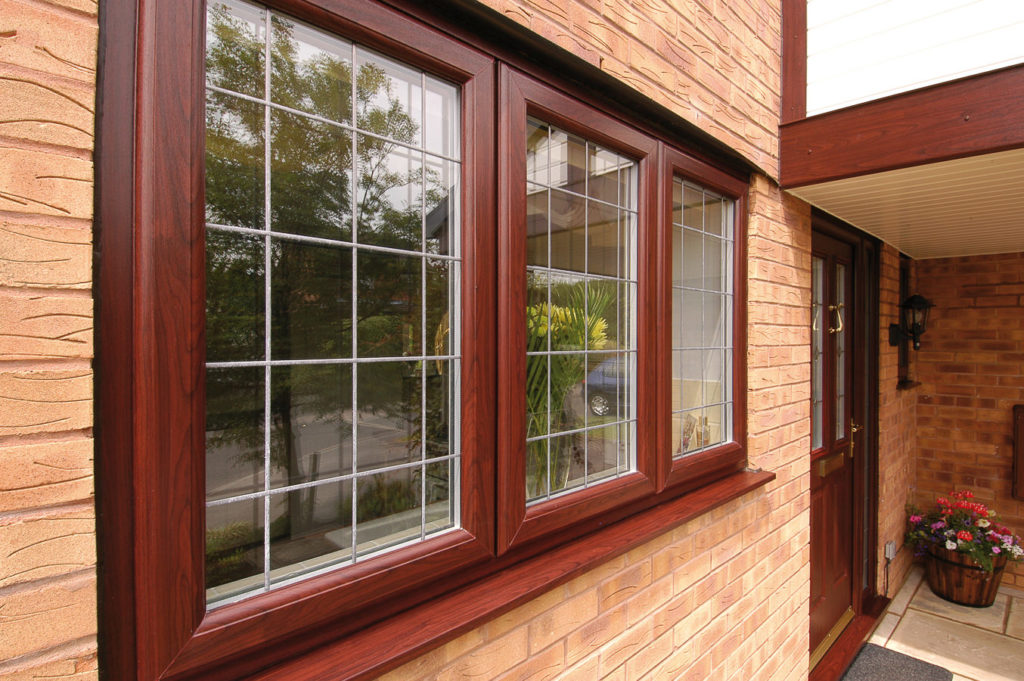
You can increase the tightness and soundproofness of “ordinary” wooden windows by simply gluing the joint between the glass and the frame with silicone sealant and adding sealing rubber bands along the contour of the structure.
The plastic variation is free of such disadvantages - it practically does not expand with temperature changes, which makes it possible to ensure the tightness of the window due to the complex sealing contour. In combination with double-glazed windows, this made it possible to provide decent heat and sound insulation. Wooden Euro frame is warmer than plastic. But taking into account the fact that the largest area of the window is glass, the resulting difference in the thermal conductivity of the structures turns out to be insignificant.
External signs, diversity
Wood is a natural material that has accompanied humans for many millennia. Like everything natural, it emits a special warmth that is not typical for materials of artificial origin. And we are not talking about a tactile sensation (although a wooden frame even seems warmer to the touch), but about a subjective perception when looking at the window. It is for this reason that unsightly plastic is increasingly hidden under a layer of laminate. But no coating, no matter how perfect, can reproduce the entire structure of wood fiber. So from an aesthetics point of view, PVC will always lose, despite the wide variety of color and texture design solutions.
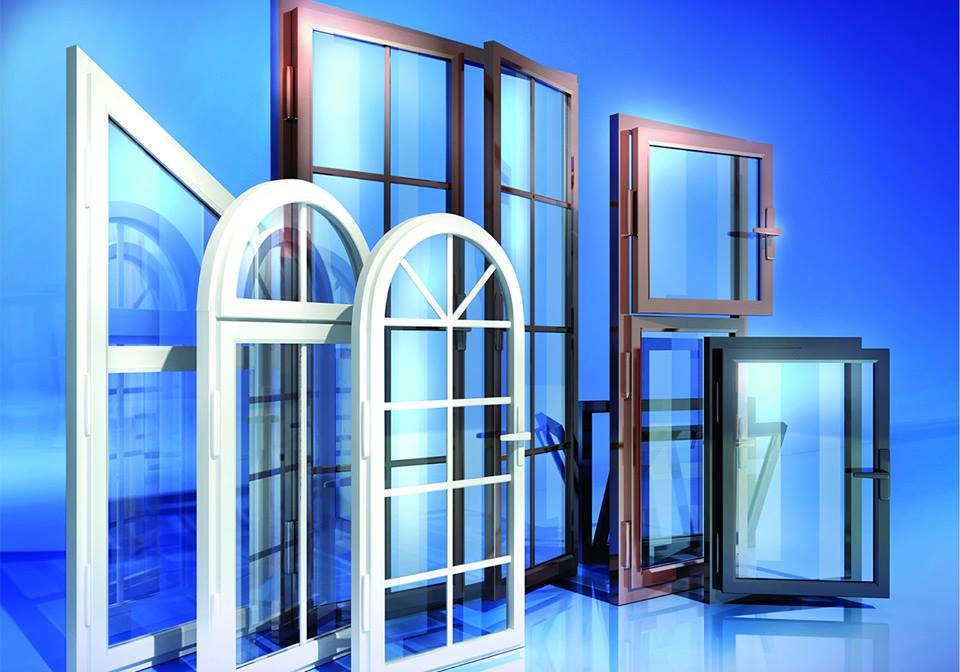
The only drawback of wood is its limited flexibility. Therefore, arched openings can only be made from it for fairly large windows.But various broken contours, which turn out to be very fragile in plastic, are successfully implemented in wood without losing the operational characteristics of the window.
Environmental friendliness
The persistent stereotype that natural products are always safer than chemical products is no longer relevant. At least in relation to windows. After all, PVC under normal conditions is an absolutely inert substance. And there has been no lead in it for at least 20 years, which also applies to Chinese fakes. And in order to inhale the fumes of plastic, you need to set it on fire, which is quite difficult - this substance melts, but does not like to burn or smoke.

Natural, environmentally friendly wood has very poor resistance to all kinds of precipitation, temperature changes and insects. To extend its service life, antiseptics, insecticides and paint coatings are needed. And this does not take into account the glue in the eurobeam. The result is the same chemical industry, only applied to a natural base. The only positive thing is that it is also safe until it burns. And taking into account the impregnation that increases fire resistance, the window is more likely to simply become charred rather than become like stove wood. So when it comes to sustainability, all options are equal.
Service life, strength, durability
With proper care, plastic can “stand” for about 40–60 years, while wood, depending on the species, can last up to 90 years. This is exactly what marketers focus the attention of buyers on. However, double-glazed windows are designed for only 15-20 years of operation, and fittings are designed for 10-15 years (high-quality). And since these elements are the same for both types of frames, and their replacement often leads to damage to the rest of the structure, there is no fundamental difference between the durability of the options.

When it comes to the durability of products, wood wins.Some windows, due to their size, cannot be made even using reinforced PVC - the structure will turn out to be “walking” and, accordingly, quickly become unusable. A pure array also has “dimensional” limitations. But Euro timber made it possible to increase the maximum window size by approximately 10%. And this without loss of strength.
Difficulties in operation and maintenance
Plastic is attractive because to keep it clean, you only need to occasionally wipe the frame with a damp cloth. True, this will not save the decorative coating - precipitation and ultraviolet radiation will gradually discolor it and render it unusable. But pure PVC will delight owners with its pristine beauty for decades. Only fittings with seals will still have to be serviced at least 2 times a year.
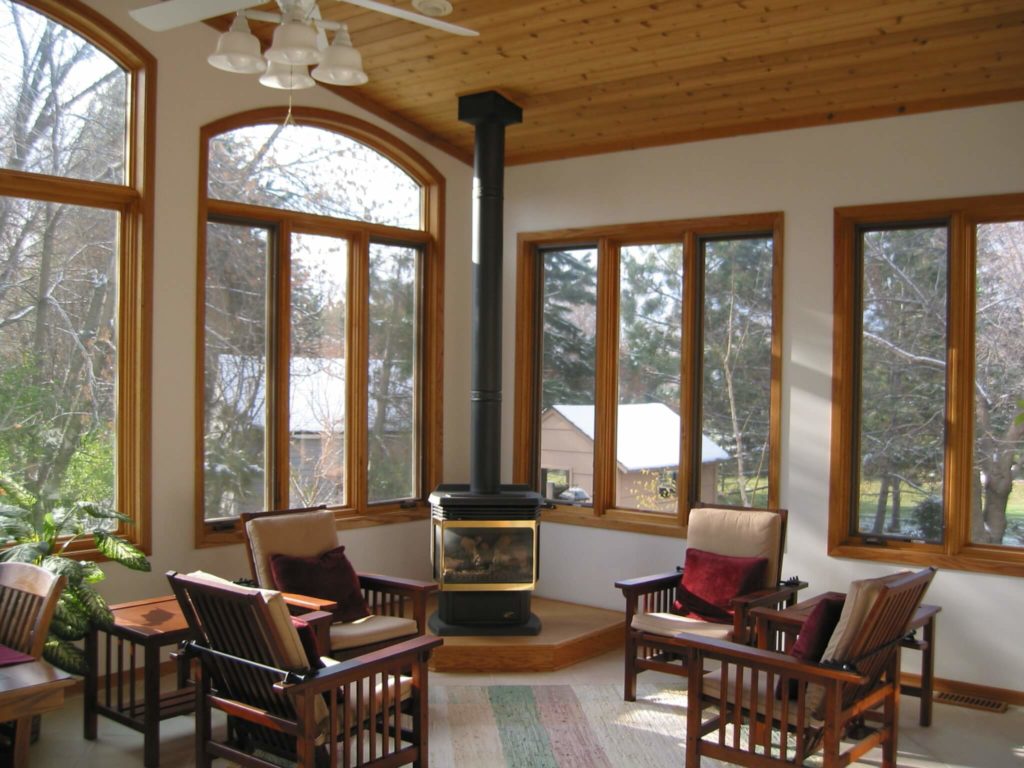
With wood it's a little more complicated. If the internal surface of the frame can maintain its aesthetics for many years, then the coating on the outside will need to be updated every 1-2 years. At least varnish.
When there is no desire or opportunity to care for the outer part of the frame, you can install Euro-windows with aluminum linings. Aesthetics will suffer slightly, but the durability of the window will not depend on the hard work and acrobatic abilities of the owners.
Price
The carpentry familiar to many will cost approximately 2 times less than a PVC window. True, you will need to invest a little more money and effort into improving it, but it will still cost less. If we are talking about comparing plastic and Euro windows, then the average difference will be 30% (the latter are more expensive). But laminate-coated PVC will cost only 20% less than its wooden counterpart.
Conclusion
The question “wood or plastic” is a bit of a misnomer, as there are several wood options.In relation to the joinery, we can say the following: it breathes, rings and sometimes does not close well. All these disadvantages are removable, which makes the option viable. A pleasant bonus for the upcoming difficulties of operation is the comparative cheapness - for some this is a decisive argument.
When comparing wooden euro-windows and PVC windows, it will not be possible to highlight any particular advantages of any of the options. Both are equally airtight, durable, and practical. But they are not equal in terms of aesthetics, so you can take a course on it.

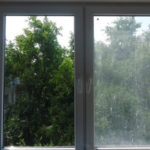


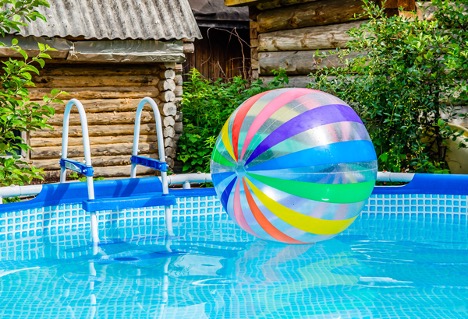
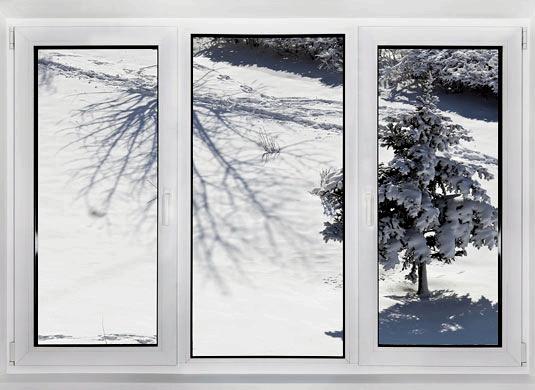
oiorio